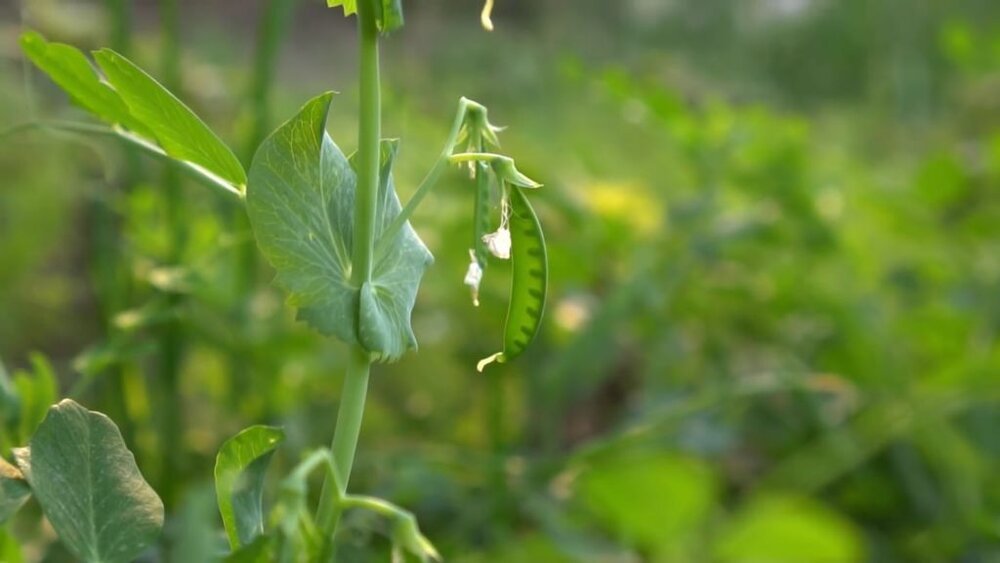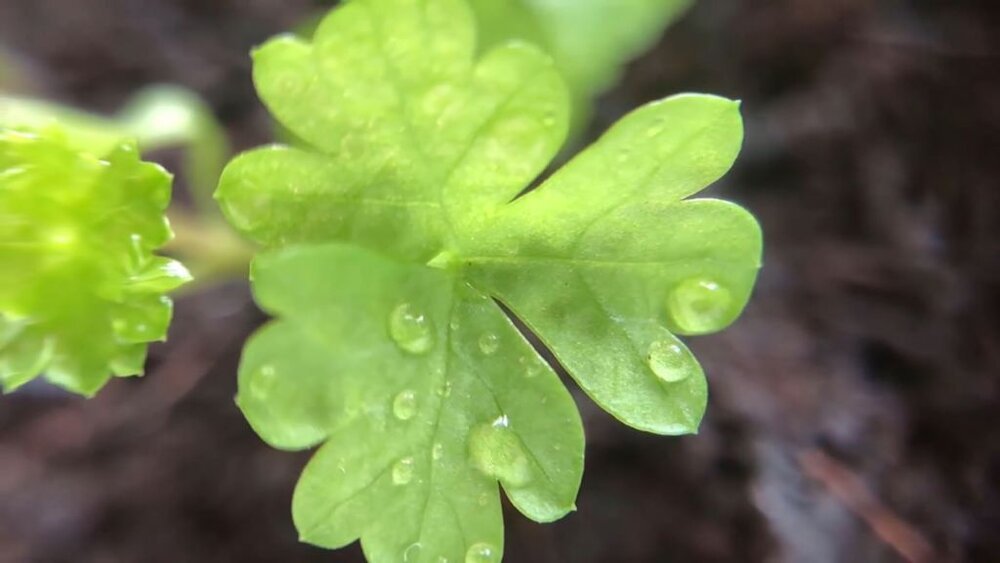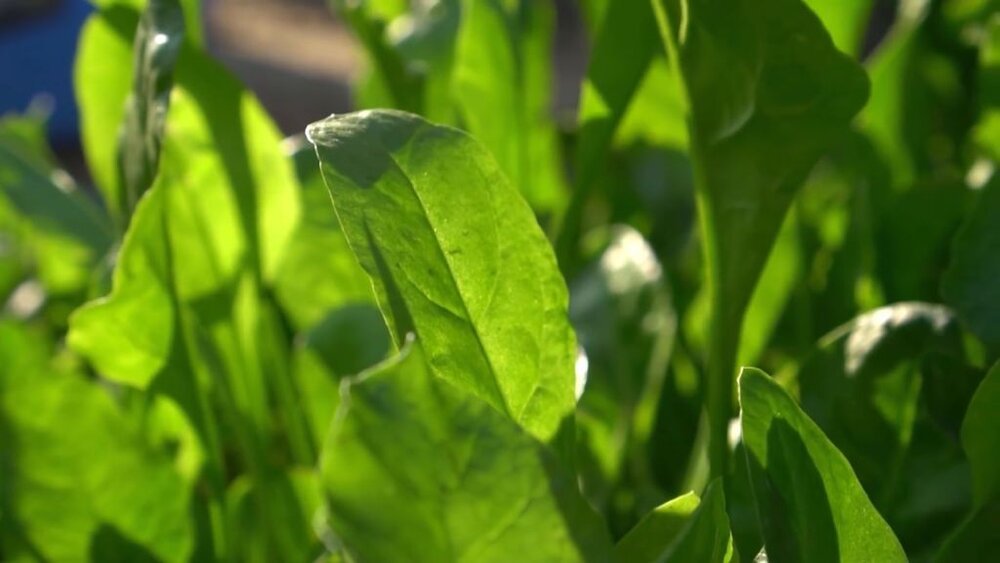15 Vegetables You Can Direct Seed in the Garden
Seed starting can be very time consuming and hard work. However, there are many vegetables you can directly seed in the garden. Some of these vegetables are very easy to start by direct seeding.
1 Peas
Peas loves cold weather and young pea plants can even tolerate frost. Plant the peas four to six weeks before the last frost one inch deep in the soil. The plant spacing should be two to three inches and row spacing 24 inches apart. Make sure to use trellis when growing peas as they love to climb and you can begin harvesting peas within a couple of months.
2 Okra
Okra is very easy to grow from the seeds. It is a perennial and also often grown as annual plant in temperate regions. Once the temperature warms up try to plant the seeds of okra in the ground and it will germinate and it will grow tall and beautiful. Both the fruit and leaves are edible. In some regions people likes to eat young leaves which are loaded with high nutritional values.
3 Corn
Corn is often called as Maize which is really easy to grow from the seed after all the danger of frost is gone and the nighttime temperature is above. The seed depth should be one inch and plant spacing should be 12 inches apart with the row spacing 24 inches apart. Corn takes 10 to 14 days to germinate but after that corn starts to grow very quickly. We can plant the corn densely because it is pollinated by the wind so the minimum area you should plant them is four by four feet. In about three to four months the corn will be ready to harvest.
4 Green Beans
Green Beans take about two months before producing so plant them at least two to three months before the first frost this could be in August or September depending on your zone. keep in mind that green beans planted in fall are little slow growing than green beans planted in spring. Plant the seeds one inch deep. The plant's spacing should be three inches and row spacing 24 inches apart. While bush beans grow on their own but pole beans require a trellis or some sort of sport structure. We can start harvesting green beans just two months after planting.
5 Cilantro
Cilantro is a very commonly used herb around the world. It is popular for its aroma and flavor. Soon as the weather cools in summer and the temperature starts to dip below 80 degrees Fahrenheit you can start planting cilantro and you can start harvesting cilantro just one month .Plant the seeds quarter of an inch deep with spacing should 6 inches and row spacing 12 inches apart. Cilantro is one of those plants that does not like to be transplanted because it develops a trap root, so if you do want to transplant you can use the rain cutter idea and can also grow cilantro in containers or pots as well.
6 Radish, 7 Carrots, 8 Beets, and 9 Turnips
All these vegetables like carrots, beets, turnip, radish can be grown in fall and spring .Sow the seeds two weeks before the last frost. Plant the seeds of all root vegetables one quarter of an inch deep with spacing three to four inches apart. Carrots can be planted a little closer at two to three inches apart. The grow spacing for all root vegetables should be 12 to 18 inches apart. Radish are ready to harvest in one month while turnips take 2 months and both carrots and beets take 3 months to harvest.
10 Cucumber
The Cucumber is a creeper that roots in the ground and grows up trellises or other supporting frames. Cucumber is very easy to grow directly from the seeds. Plant the seeds right into your garden after all the danger of frost is over in spring and the minimum temperature at night is 45 degrees Fahrenheit. The seeds should be one inch deep with the plant spacing 24 inches apart and row spacing anywhere from three to four feet apart because cucumbers are vines and they can get huge
11 Spinach
Spinach is an annual plant can be grown in fall and spring to grow spinach in spring plant spinach six weeks before the last frost date. Plant the seeds one quarter of an inch deep plant spacing and row spacing should be 12 inches apart. Harvest spinach as soon as it is big enough to eat which is usually 30 to 45 days after planting
12 Squash and Pumpkins
Squash and Pumpkins including zucchini ,sugar pie pumpkins butternut squash comes in one family Cucurbitaceae. Plant the seeds directly into your garden in spring after all the danger of frost is over and nighttime temperature is above 45 degrees Fahrenheit. The seeds should be planted one inch deep with spacing 24 to 36 inches and row spacing four to six feet apart. Squash and Pumpkin plants can grow huge so make sure you have adequate area in between the plants to accommodate the growth. Pumpkins will take up to three to four months to harvest however squash will start producing in just two months so you can start having zucchini and yellow squash just two months after planting
13 Mustard
Mustard is a popular and healthy condiment which is really good to saute along with spinach you can start growing mustard in fall at least two to four months before the first frost which is from August to October. Plant the seeds half an inch deep with spacing three inches and row spacing nine inches apart.This will yield the maximum harvest as the mustard plants are growing top of the flowers to encourage the plant to grow more leaves. we can start harvesting mustard leaves in about one and a half to two months after planting when harvesting mustard, don't have to get rid of the mustard flowers since mustard flowers are also edible.
14 Fenugreek
Fenugreek is used as as a condiment in most of the parts of India. Both the leaves and seeds has tremendous health benefits. Always buy fenugreek seeds from online store or even a spice store. Before planting first soak the seeds in water for two hours an d then plant the seeds half inch deep and spacing can be anywhere from one to three inches and row spacing 12 inches apart. Within two months the whole bed starts to fill in and we can start harvesting Fenugreek and will keep coming back and producing a lot more leaves until the frost hits.
15 Potatoes, Garlic, and Ginger
Potatoes, Garlic and Ginger can be planted one inch below the soil level with amount of spacing. Harvest potatoes after three months once they are in good size. Buy the seed garlic or use organic garlic from grocery stores but do not buy conventional garlic to grow because it is usually sprayed with growth suppressant chemicals. Use bigger garlic cloves to plant and figure out the depth and spacing and garlic should be planted about a thumbs length deep and a hand's length, this is basically correspond to planting garlic cloves at least two inches deep and six inches and row spacing should also be six inches apart As soon as the leaves begin to die back garlic is ready to harvest in about eight to nine months. Select a fat healthy piece of ginger the piece of ginger and prepare a loose composition of soil plant ginger about one inch deep, don't plant ginger right on the surface or way too deep. After two weeks the shoots of ginger pop out of the soil and start to grow at this point start watering heavily and after a month the ginger plant is about six inches tall and has distinct leaves. Ginger likes a lot of water so make sure the soil remains moist and does not dry out. After six months the third shoot has come up and the plant is about two and a half feet tall in eight to nine months ginger is ready to harvest.








